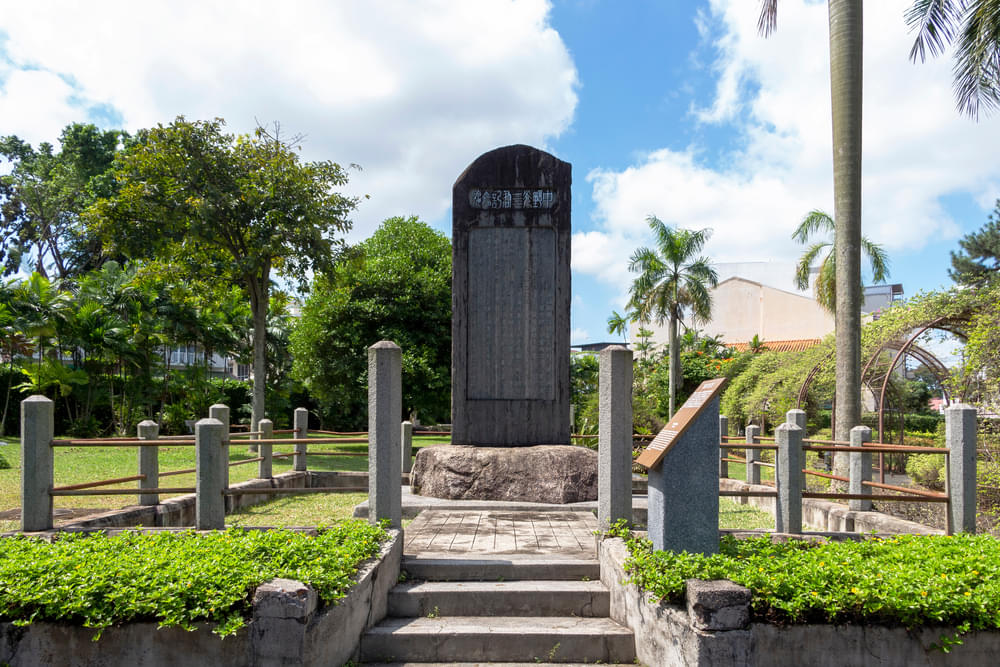About Japanese Cemetry Park
With its well-manicured and zen-like settings, this quiet park will transport you to Japan with its gorgeous floral archways and charming Japanese architecture. This park has served as the final resting place for a variety of Japanese people in Singapore for over a century, ranging from destitute migrants struggling to make a life on the coasts to wealthy merchants and even WWII military officers. But it's much more than a cemetery, and as you explore this peaceful area, you'll learn about decades of history.
In the initial days, the Japanese Cemetery Park's gravestones belonged to Japanese escorts who never returned to their homeland. The Japanese people became more prosperous as more Japanese merchants and traders arrived in Singapore after World War I. Many merchants and tradesmen were also cremated at the cemetery after their deaths, with magnificent tombstones and commemorative plaques. For those interested in exploring this historical aspect of Singapore, various Singapore travel packages offer guided tours of significant sites like the Japanese Cemetery Park.
Also Checkout: 45 Best Things to do in Singapore with Kids
Japanese Cemetry Park Highlights
• The largest Japanese cemetery in Southeast Asia and the first Japanese cemetery in Singapore.
• The sprawling 30,000 square metre Japanese Cemetery Park has around 1000 graves of Japanese civilians and soldiers.
• Thousands of Japanese troops, marines, and airmen were slain in World War II, and their ashes are interred in the Japanese Cemetery Park.
• The Japanese Cemetery Park is where Singapore's early Japanese community is buried.
• Home to some of the beautiful heritage trees, manicured gardens, intricately crafted sculptures, tombstones, and floral pathways.
How To Reach Japanese Cemetry Park
By Bus:
If you are thinking of travelling by bus then you can hop on 103, 147, 156, 43, 43M, 73, and 76 buses. All these buses pass through the Japanese Cemetery Park.
By Metro:
You can take the North East Line Metro to reach the Japanese Cemetery Park from any place around the city.
Also Checkout: The Best Time to Visit Singapore
Best Time To Visit Japanese Cemetry Park
The Japanese Cemetery Park welcomes travellers all through the year but the best time to visit would be from the month of December to the month of June. The climate majorly remains dry with low moisture making it comfortable for you to explore the park.
Must Read: Things To Do In Pulau Ubin
Japanese Cemetry Park Other Essential Information
History of the Japanese Cemetery Park
The Japanese Cemetery Park was established in 1891 to service the burial needs of the Japanese community in Singapore. Futaki Takajiro, Shibuya Ginji, and Nakagawa Kikuzo, three brothel owners, got permission from the government in 1891 to create a cemetery for the indigent Japanese prostitutes who died in Singapore but had no final resting place.
After World War I, Japan's industrialisation accelerated at an incredible rate, and the Japanese population here began to comprise people from a variety of industries, including agriculture, retail, and fishing. These people's tombs were later added to the cemetery. The building of the tombs became increasingly intricate and sophisticated as the population grew wealthier.
Also Read: 30 Best Bars in Singapore
Prayer Hall
The Prayer Hall, which is visible while entering from the main driveway, was completed in 1986 but is now only used for ceremonies. Though the hall isn't open to the public, you may still admire its complex construction and take a few photos from the outside.
Must Read: Things to Do in Little India Singapore
Tombstones & Monuments
There are 910 tombstones strewn over the area, each one distinctively shaped and carved. More than half of them are unremarkable gravestones from the first Japanese immigrants, many of whom worked in brothels and died in poverty. However, more extravagant monuments celebrating prominent figures such as Yamamoto Otokichi, the first Japanese to live in Singapore, tower over the others.
Suggested Read: 25 Best Things to do in Singapore at Night
Heritage Trees
There are also Heritage Trees in the park, such as a rubber tree from when the park was still a rubber plantation and a lychee tree, which is common in Japan but cannot bear fruit in Singapore's climate. You'll not only be able to appreciate several traditional Japanese statues sprinkled throughout the park, but you'll also be able to relax as you stroll through it.
Click Here To Book: Singapore Zoo Tickets
Floral Archways
The Japanese Cemetery Park is dotted with quirky flower archways decorated with lovely pink bougainvilleas and spans four soccer fields. These provide enough shelter along the park's major routes, but they're best renowned for being reminiscent of Japan's lovely springtime cherry blossoms. It's a favorite photo location, especially when the petals begin to gently fall down onto the pathway. While bougainvillea blooms all year in Singapore, the pinkest, most lovely scene may be found shortly after the monsoon season or after it rains.
You Can Also Book: Gardens By The Bay Tickets
Tourism Board Alliances
Japanese Cemetery Park FAQs
What are the best activities in Singapore that you can book via Thrillophilia?
Here are the best activities in Singapore that you can book via Thrillophilia:
What are the other attractions in Singapore you can book via Thrillophilia?
Here are some of the other attractions in Singapore you can book via Thrillophilia:





.jpg?w=1280&dpr=1)







.jpg?w=1280&dpr=1)


